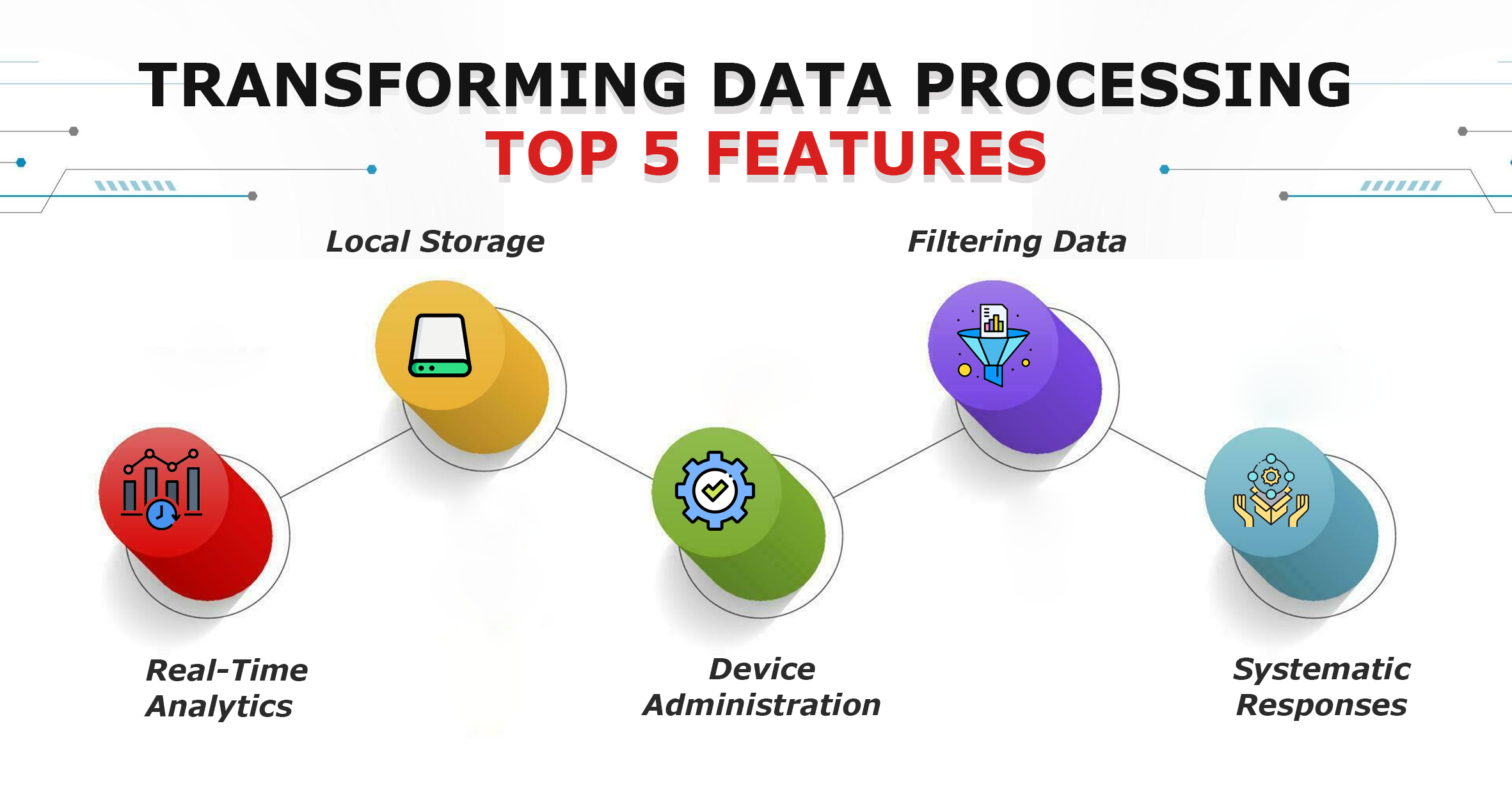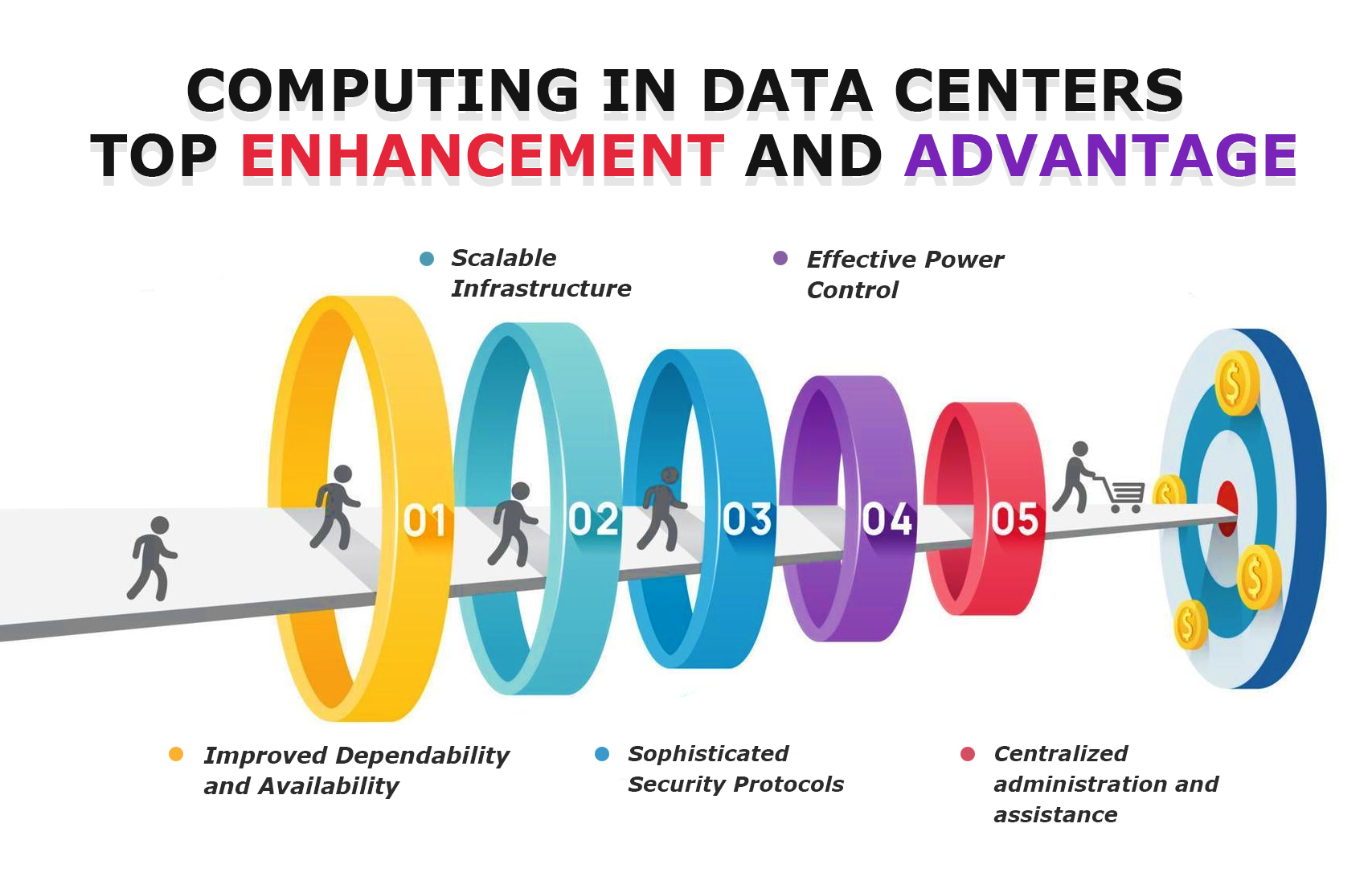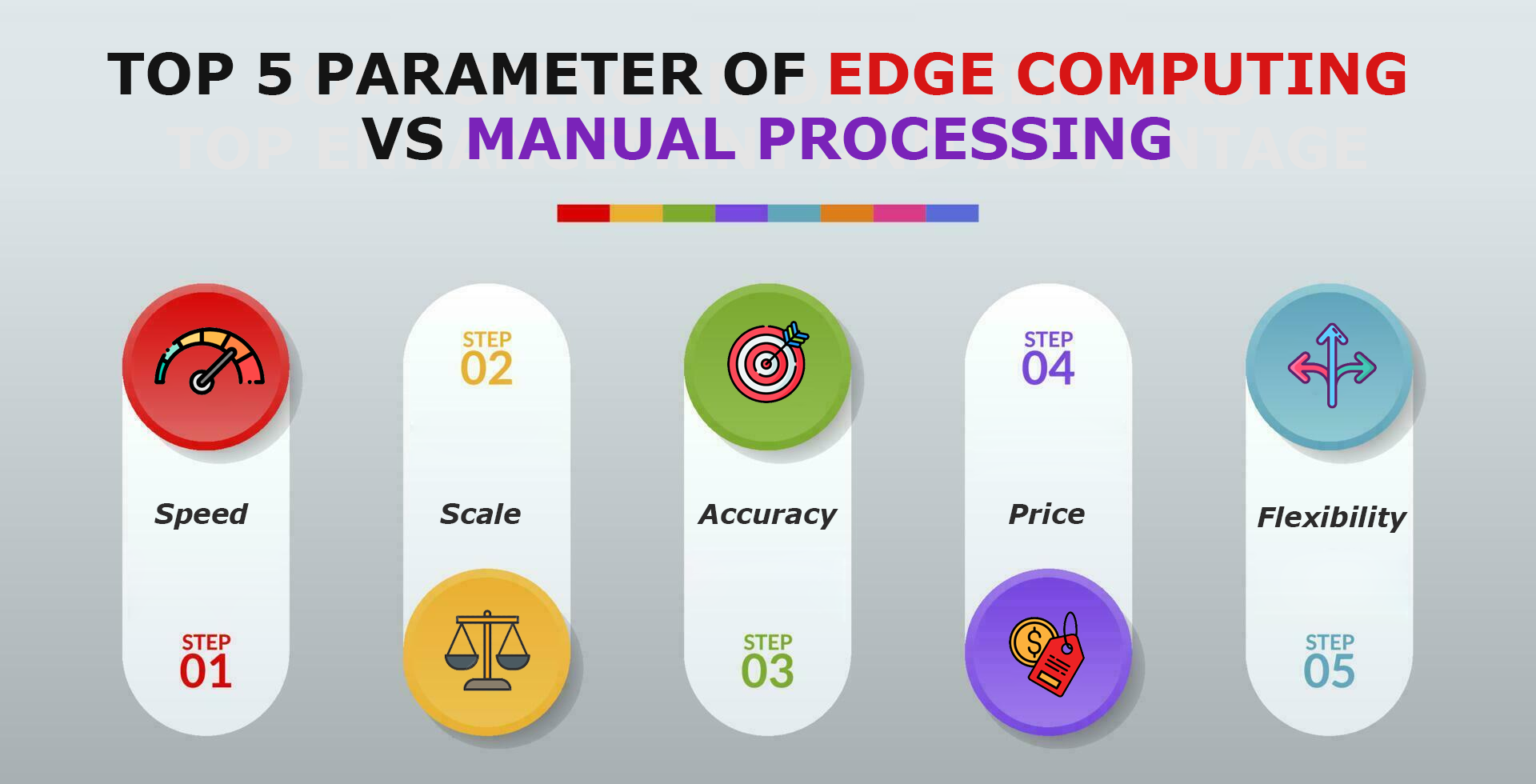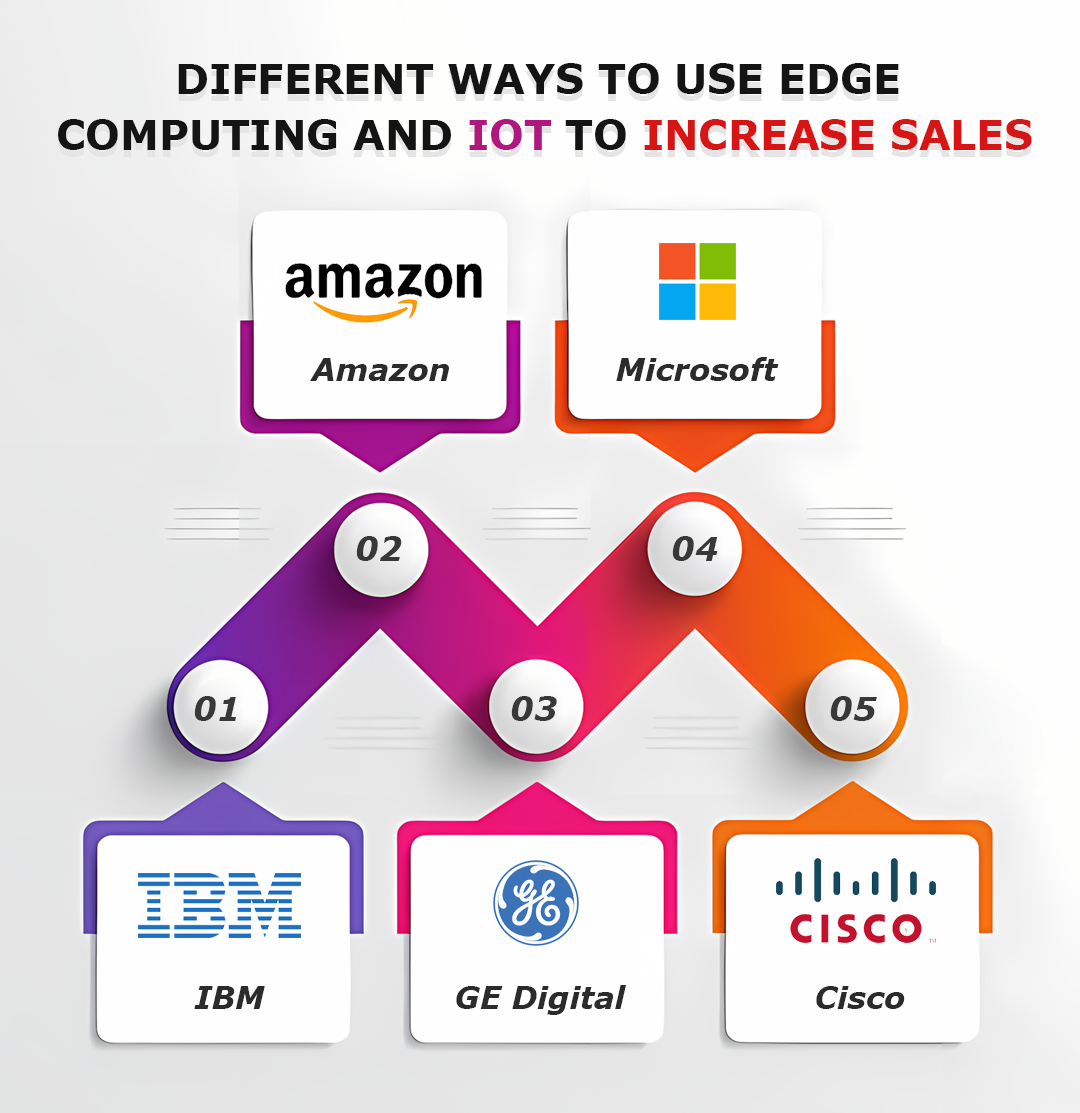Boosting Business Efficiency Through Edge Computing in IoT
Top Edge Computing in IoT Features: Transforming Data Processing

Real-Time Analytics
Compared to standard cloud processing, edge computing delivers insights up to 90% quicker by processing and analyzing data at the source. This real-time capacity can cut latency by up to 50 milliseconds, according to 2024 research by Gartner. Edge Computing in IoT is important for time-sensitive applications like real-time industrial monitoring and driverless cars.
Local Storage
Local data storage, made possible by edge computing, allows for 70% quicker data retrieval than cloud storage. This can lead to considerable cost savings; according to an IDC analysis from 2024, local storage solutions can help enterprises cut their data storage expenses by around 30%.
Device Administration
Edge computing simplifies the efficient administration of IoT devices. According to Forrester’s research from 2024, edge solutions can lower the overhead associated with device administration by 40%, which facilitates the integration. Industrial IT Solutions upkeep devices across large networks, such as those seen in industrial IoT systems or smart cities.
Filtering Data
Edge computing reduces the amount of data that must be sent by up to 60% by processing and filtering data locally. Edge Computing in IoT improves performance and uses less bandwidth. According to a recent Aberdeen Group report, edge computing can increase data processing efficiency by 45%. AI Software Development Company which is important for applications that produce enormous amounts of data, including environmental monitoring.
Systematic Responses
By enabling quick decisions based on real-time data, edge computing increases operational effectiveness. According to a McKinsey report from 2024, companies using edge computing to automate reactions can increase operational efficiency by as much as 35%. This is important for dynamic contexts like real-time asset management and smart manufacturing.
Top 5 Business Benefits of Edge Computing in Data Centers

Improved Dependability and Availability
High dependability and uptime are ensured for edge computing infrastructure by the stable environment that data centers provide. Data centers achieve 99.999% uptime on average, according to a 2024 research by Uptime Institute, as opposed to the 99.9% usually seen in smaller, scattered edge configurations. This means that there will be less downtime and continuous service.
Scalable Infrastructure
Data centers provide expandable resources to accommodate increasing needs. Data centers can swiftly expand to meet the demands of growing data volumes and processing power, as stated by Statista in 2024. This adaptability helps to meet the dynamic requirements of edge computing.
Sophisticated Security Protocols
Artificial Intelligence Solutions with modern security mechanisms, such as cyber defenses, access controls, and physical security, are installed in data centers. According to a Deloitte report from 2024, 85% of data centers have security measures that meet or beyond industry requirements, greatly lowering the danger of data breaches and illegal access.
Effective Power Control
Data centers often make use of cutting-edge cooling and power distribution technologies in their architecture to effectively control power usage. Edge Computing in IoT data centers can achieve up to 40% more energy efficiency than typical edge computing configurations, which can lead to cost savings and sustainability, according to a 2024 assessment by the Green Electronics Council.
Centralized Administration & Assistance
IoT Smart App Development data centers provide edge computing infrastructure centralized administration and technical assistance. According to an IDC report from 2024, centralized management decreases operational complexity and support costs by 30%, freeing up resources for firms to use professional assistance while concentrating on their core competencies.
Edge Computing vs Manual Processing: Enhancing IoT Efficiency and Real-Time Insights

Speed
When data is processed in real-time using edge computing, insights can be obtained 90% quicker than with manual processing, which has handling and analysis delays.
Scale
With the capacity to scale as data quantities and complexity increase, edge computing develops smoothly, in contrast to manual systems that struggle and slow down.
Accuracy
Smart Retail IoT Solutions compared to manual approaches that are prone to errors, automated edge computing minimizes human error and produces more exact data.
Price
Because it requires less data transmission and storage, edge computing is more cost-effective than manual processing, which has greater costs because it handles data more often.
Flexibility
While manual systems need considerable reconfiguration and modifications, edge computing easily adjusts to new requirements.
Also See: Power of Edge Computing in IoT for Smarter Business Operations
Top Companies Leveraging Edge Computing and IoT for Innovation and Growth

Real-time data processing and improved operational efficiency are made possible by the convergence of edge computing and IoT, which is transforming several sectors. Smart asset-tracking businesses can gain a substantial edge by using these technologies as they fight to remain competitive.
Here’s a look at how top companies are using edge computing, which is fast becoming a key component of the current digital revolution.
IBM
Specifically, IBM’s Edge Application Manager enables dealing with massive IoT data, as it is aimed at effective app management and deployment across the edge.
- Due to the ability of IBM solution to scale up and handle several workloads across various edge devices, it has enhanced operational efficiency by 50% by 2024.
- High performance and reliability of the system are highly essential to sectors requiring real-time analytics for rapid decision-making.
Amazon
AWS Greengrass is one of the best examples of the capabilities of edge computing associated with real-time processing. It is an extension of AWS functionality and capabilities on a local connected device; the users can perform data processing and analysis on the local device whilst retaining cloud storage, analytics, and administrative functions.
- In AWS Greengrass V2, between now and 2024, up to 80% gains in data processing should be attainable.
- Which in turn will enhance Amazon’s capabilities to more accurately control and manage IoT devices throughout its expansive ecosystem.
GE Digital
GE Digital enhances the IIoT applications with a focus on optimizing both computation and transmission with the aid of edge computing.
- By 2024, this technology will help GE’s edge solutions to reduce maintenance costs by 30% and increase uptime.
- By Edge Computing in IoT the types of equipment increase by 20%: the role of edge computing in reengineering industrial operations.
Microsoft
Microsoft’s Azure IoT Edge is a scalable solution that brings cloud intelligence to edge devices. Microsoft Azure IoT Edge can let businesses send their cloud workloads to edge devices with the help of computing local data with real-time responses.
- By 2024, Azure IoT Edge will have delivered capabilities to millions of devices across the globe, ensuring the protection of sensitive data.
- Edge Computing in IoT also reduces response time and makes it possible to handle complex IoT events.
Cisco
Cisco shows that IoT integration favors network performance and protection through edge computing solutions.
- Edge technologies in Cisco, for instance, Cisco Edge Intelligence, allow immediate action in case of a threat or comprise analytical functions.
- By the year 2024, Cisco’s technologies have improved total network productivity and cut the response time for network security by 40%.



Comments
Post a Comment